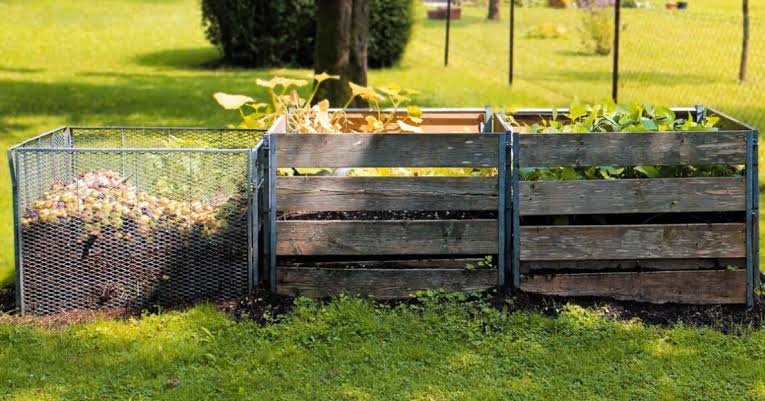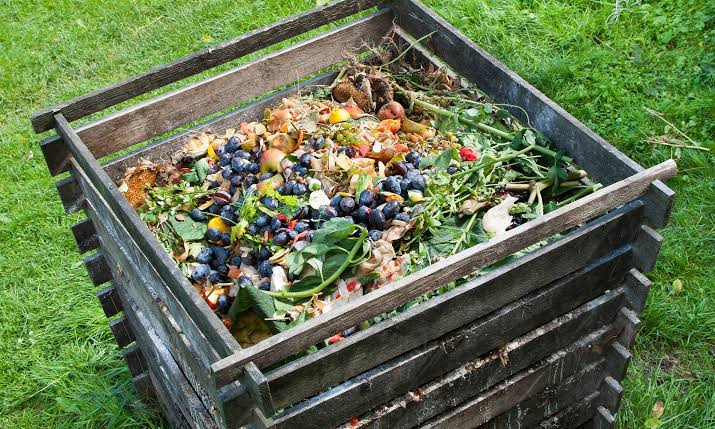Composting is an age-old agricultural practice for recycling various organic materials, including waste products, into organic soil rich in plant nutrients and beneficial organisms. Some experts view it as an ‘entryway drug’ to zero waste and a cornerstone of organic gardening and agriculture. The end product of an excellent composting process is always a nutrient-rich organic soil called ‘humus.’
Humus can be used to improve your soil quality and, as a result, reward you and your garden with healthier, productive plants that are 100% organic. However, you’ll need to build a compost heap (also known as a compost pile) to start composting at home, in your garden, or any location you deem fit for this kind of activity. Continue reading to learn what a compost heap means (including its benefits), why people make a refuse heap, and how you can build one without hassle.
What does a compost heap mean?
A compost heap is a pile of organic matter that decomposes to produce organic compost. It’s what gardeners use to recycle their kitchen and garden wastes into environmentally friendly, rich compost that can help crops, garden plants, and trees grow healthier. A compost heap provides the ideal environment and conditions for composting microorganisms (aerobes and anaerobes) to help facilitate the natural decaying or decomposing process of organic materials.
A refuse heap is what you need in your garden to make your organic compost. It’s important to know that the misconception that compost smells and attracts pests isn’t entirely true. Composting done the right way doesn’t smell and attracts no bugs, mice, or other pests.
Why you need to add a compost heap to your garden
Here are some of the purposes that a compost pile can serve gardeners.
Providing nutrients for plant growth
A compost heap can help create ideal conditions that support the rapid growth of detritus-eating microorganisms and bigger critters such as earthworms. These microbes and animals would feed on organic waste materials in the heap you make and, in the process, break them down into a simpler form that plants can absorb as nutrients for their growth and healthy development. Not only does good compost help improve plant nutrients, but it can also suppress plant diseases and pests.
Improving the quality of your garden soil
A compost heap can be your source of better soil amendment that’s great for soil improvement. You can use good compost to improve your garden soil structure and drainage. Gardeners can use compost to loosen clay soils and improve the water-retaining capacity of sandy soil. It’s noteworthy that improved soil quality (structure and texture) would translate into a healthy, thriving garden that’ll reward you with better yields of more nutritious fruits, vegetables, and flowers.
Reducing garden and kitchen waste
A refuse heap is not limited to recycling garden wastes for use as a soil improver. It’s for everyone looking for a healthy and easy means to keep debris at a minimum. A refuse heap can help take care of garbage that’s made of yard trimmings and food scraps that would otherwise end up in your local landfill. This would help reduce the amount of waste that goes to landfills – which is a good thing for the planet.
Saving you money on commercial fertilizers and garden waste removal
Most gardeners indeed build a compost pile that supports good composting as an inexpensive way to produce nutrient-rich organic matter for their garden. Doing this would let them reduce dependency on the use of commercial fertilizers, and as a result, there’ll no need to apply multiple fertilizers to keep plants healthy. Composting costs next to nothing once you have a refuse heap in your garden. A compost pile can save you money by helping you cut back what you spend on fertilizers or reduce the amount you would pay to remove your garden wastes.

If you’re considering building a compost heap for garden and kitchen waste composting in your home or garden, you should follow the steps below:
1. Get the right Compost bin or container
You’ll need a compost bin or container for your compost. Make sure to select the right size container that fits everything you need to compost. The container should have no base and sit on the soil to permit worms, other creatures to facilitate the decomposition process to get in and out. Place a few inches of branches and twigs at the bin’s base to slightly elevate your pile off the ground to allow for adequate aeration/ventilation.
2. Choose a location for your compost heap
Select the location in your garden you think is most suitable for composting. Your choice of compost heap location should account for both function and aesthetics. It’s advisable to choose a behind-the-scene location to place your compost bin to hide it away from your neighbours who believe the myth of the smelly, pest-attracting refuse heap. You may want to put your compost container in a grassy, relatively shady part of your garden. You can get a garden waste bag to use to transfer your garden waste from any point in your garden to your refuse heap.
3. Add well-balanced compostable materials
An equal balance of oxygen, nitrogen, carbon, moisture, heat, and compostable materials is required for the most successful composting. The United States Environmental Protection Agency recommended a balanced mix of ‘greens (nitrogen-rich materials)’ and ‘browns (carbon-rich materials)’ is needed to create the proper environment for composting processes to occur. Examples of greens include green leaves, fruits and vegetable craps, eggshells, fresh grass clippings, etc. Examples of browns are dead plants, hay, weeds, straw, leaves, untreated lumber sawdust, etc.
4. Prepare your organic waste materials
You might find some big chunks of matter in the waste you’re reading ready for composting. If you do, it’s recommended you chop or break them into smaller particles before you dump them in your compost pile. This would allow even and faster decomposition to occur in your container.
5. Aerate and water your heap when necessary
The aerobic microbes responsible for decomposition require adequate air to perform their functions. In the absence of air, these microbes cannot help with the decomposition process, and the result might be a smelly, pest-attracting compost. Give your pile adequate aeration once a week by turning your composting materials around using a spade or shovel.
It’s also important to water your pile to maintain its moisture (especially during a hot day). Mulching your pile or covering it may be a way to keep your pile from getting too dry during the hot season. You can try to get a multi-purpose compost formulated to help retain your pile water and nutrient.
6. Let nature do the rest
Once you’ve done your part by following the above steps, there’s nothing left for you to do other than to wait for when your compost is ready for use. Give nature a few months, and your compost would come out good. When you notice that your organic wastes have turned dark brown colour and give out an earthy smell, that’s a sign that your compost is completely done. It’ll also feel warm to the touch, indicating that it retains all the beneficial microbes inside.
FAQs
What should go in your compost heap?
Examples of materials to compost include fruits and vegetables, eggshells, coffee grounds and filters, tea bags, nutshells, shredded newspapers, paper, and cardboard, yard trimmings (grass, leaves, branches, and twigs), houseplants, hay and straw, sawdust, woodchips, cotton, and wool rags, dryer and vacuum cleaner lint, hair and fur, and fireplace ashes, among others.
What should not go in your compost heap?
It would be best if you avoided anything that would make your compost go wrong and smell bad. Do not compost materials including dairy products, eggs, fats and oils, meat or fish bones and scraps, coal or coal ash, black walnut, diseased or infected plants, pet waste, chemically treated yard trimmings, etc.
Conclusion
Composting is simple and easy to do inside a compost heap. There are many purposes associated with a compost pile that extends beyond garden use. A refuse heap helps ensure a faster natural decomposing process by providing the ideal environment for composting microbes and other soil decomposing organisms to thrive.

